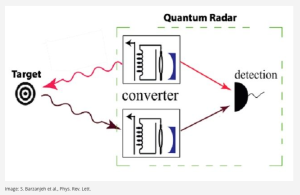Peter Lobner
U.S. Global Positioning System (GPS)
The U.S. military-operated Global Positioning System (GPS) achieved full operational capability in 1995 and was declared a “dual-use” (military and civilian) system in 1996. Today, GPS functionality is embedded in many of the electronic products and vehicles we use on a daily basis. You’ll find plenty of information on GPS at the following link:
http://www.gps.gov
Russian GLONASS:
Globalnaya Navigatsionnaya Sputnikovaya Sistema (Global Navigation Satellite System), GLONASS is a Russian military-operated satellite-based navigation system. The intent for GLONASS to be a dual-use system was declared in 2007 and full global coverage was achieved in 2011. By the end of 2011, GLONASS claims it met a goal of matching GPS accuracy and reliability, and GLONASS may be more accurate than GPS at high latitudes because of the higher inclination of GLONASS satellite orbits. iPhones and several types of Android phones have both GLONASS and GPS chips and may use both satellite signals to improve navigation results. Check out the story at the following link:
http://www.makeuseof.com/tag/glonass-gps-alternative-never-knew-existed/
European Galileo:
While European independence from GPS & GLONASS was a key goal behind the creation of the new system, Galileo is intended to be 100% interoperable with GPS and GLONASS. The first two operational Galileo satellites were launched in October 2011, with two more following in October 2012. These four Galileo satellites represent the operational nucleus of the future 30-satellite constellation. The 5th & 6th Galileo satellites were launched in August 2014 into incorrect orbits and are not operational.
You can get more information on Galileo at the following European Space Agency web site:
http://www.esa.int/Our_Activities/Navigation/Galileo_and_EGNOS
Relativistic corrections needed for satellite navigation system accuracy:
These three satellite navigation systems depend on relativistic corrections to ensure that accurate data are delivered to the end users. You can find a short article entitled, “Real-World Relativity: The GPS Navigation System,” at the following link:
http://www.astronomy.ohio-state.edu/~pogge/Ast162/Unit5/gps.html
 Image source: S. Barzanjeh et al., Phys. Rev. Lett.
Image source: S. Barzanjeh et al., Phys. Rev. Lett.